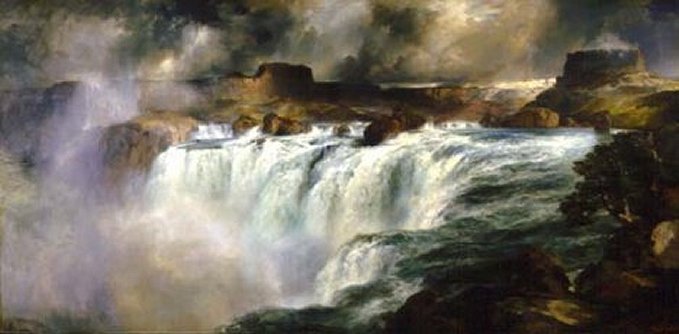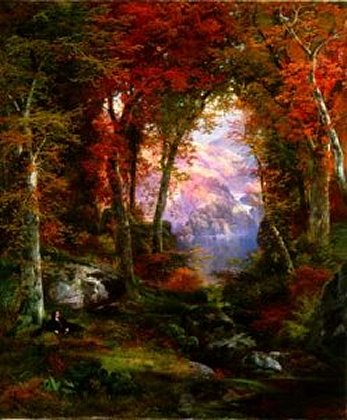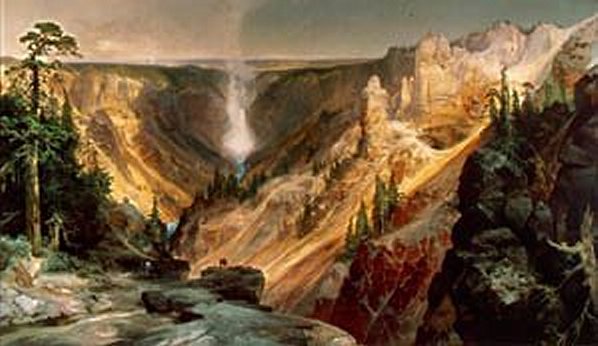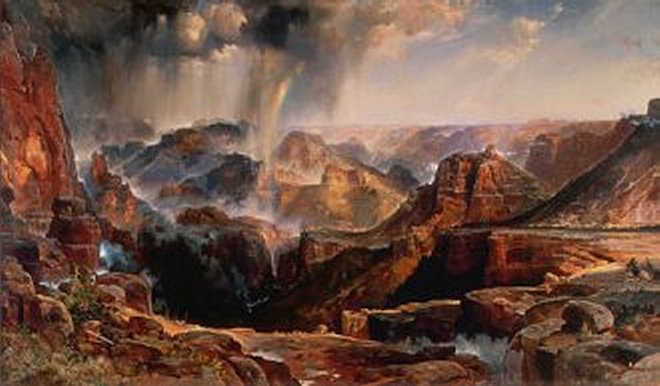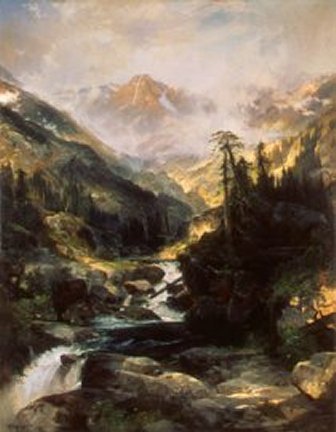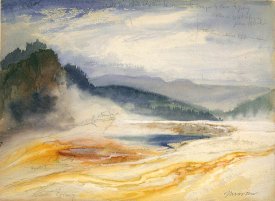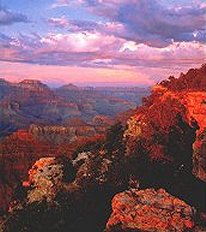Thomas Moran | ||||||||||||
| ||||||||||||
Music to accompany this page:
| ||||||||||||
Thomas Moran was born on February 12, 1837 in Bolton, England. He moved to Kensington, Pennsylvania in 1844, after his father, a hand-loom weaver, was replaced by machine during the Industrial Revolution. After completing his primary education, Thomas entered an apprenticeship with an engraving firm. It wasn't soon after, that he terminated the apprenticeship to join his brother Edward, and aspiring artist, in his studio.
At about this time, Moran became vividly interested in the works of J.M.W. Turner, an English landscape artist. Joined by his brother, he traveled back to England in 1862 to following the sketching route used by Turner along the England coastline. In 1866, Moran once again returned to Europe to continue his study of the European masters, and to exhibit some of his own major early work, Children of the Mountain, in the Exposition Universelle in Paris. This painting was used four years later to help finance his first western trip, and ultimately, change the course of his career. In 1871, Thomas was requested by Scribner's Magazine, to rework some sketches that had been submitted, for an upcoming article Titled "The Wonders of Yellowstone." This would be the first extensive description of the Yellowstone landscape, to be published in the East. Moran quickly arranged to join a government-sponsored survey of Yellowstone, that would be led by Ferdinand V. Hayden, a geologist that was being sent to measure and map the area. Moran rapidly adapted to life on the trail, and on July 11, 1871 he wrote:
Soon after Moran returned east, Hayden and others, began promoting the idea that Yellowstone should be protected and preserved as a national park. Since none of the members of Congress had seen Yellowstone, Hayden and his colleagues brought Moran's watercolors, along with the photographs taken by Jackson, to Capitol Hill. It was reported that these played a decisive role in the establishment of Yellowstone as the first national park in March 1872. Congress later appropriated $10,000 for the purchase of Moran's Grand Canyon of the Yellowstone. The seven by twelve foot painting offers panoramic view of Yellowstone Canyon featured the distant falls and a striking display of the canyon's golden walls. In the foreground Moran placed a group of figures that includes Hayden, and the artist himself. Moran's third great western landscape was completed in 1875. This time the subject matter was a famous Colorado peak, renown for a cross of snow on its side. Moran approached the endeavor with the same liberty he had seen exhibited by Turner, during his trek through England. By 1876, Thomas Moran had established himself as one of the major landscape painters of his day. Moran's medium of choice was watercolor, and he would take watercolor sketches from the field, and use them as the basis for studio variations. One series of images centered around the Great Springs of the Fire Hole River. Clearly visible underneath watercolored brushstrokes of color across the upper portion and the lower left portion of the painting, are the pencil sketchings and notes enter by Moran while developing the picture.
Thomas Moran was a man with a broad spectrum of interests, and was never at a lost for inspiration. While the popularity of his paintings of the West soared, Moran worked on other subjects that had peaked his creative instincts, including coastal life, pastoral settings, urban and industrial views and historical scenes. | ||||||||||||
| ||||||||||||
| ||||||||||||
|
[ Bev Doolittle ]
[ Thomas Kinkade ]
| ||||||||||||
This Web Site and its contents (eg. HTML, design and images) are the property of Angelsmist. Please notify the author if you wish to use any of the contents or images. | ||||||||||||
